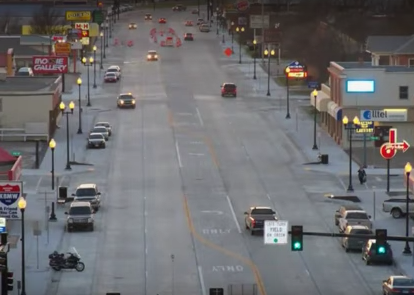In a welcome sign from an industry group that has been slow to embrace street designs that prioritize walking, biking, and transit, the American Association of State Highway and Transportation Officials (AASHTO) released a statement last week saying it intends to "better address multi-modal issues."

AASHTO's street design manuals are highly influential and lay out standards that many engineers view as gospel. While the guidelines are supposed to be flexible, in practice they promote a highway-style approach to city streets, emphasizing the movement of motor vehicles more than a welcoming pedestrian environment or safe routes for biking.
That appears to be changing -- slowly. The group's Committee on Highways recently passed a resolution [PDF] saying its next "Green Book" -- the big book of street design standards -- "should address designing in and for a multi-modal transportation system." That version is due out in 2021.
Five years may be a long time to wait, but this is an encouraging development, said Ian Lockwood, an engineer with the Toole Design Group and a voice for reform inside the profession. "'Multi-modal issues' is their way of saying 'allowing and encouraging cities, counties, and states to design streets that are safer and more comfortable for people who are walking, cycling or using transit,'" he said.
While AASHTO's resolution points toward progress, it also falls back on old excuses to justify its slowness to adopt modern design standards that have proven effective in cities all over the world -- including the U.S. The National Association of City Transportation Officials has stepped up to provide American engineers with design guidance for interventions like protected bike lanes, transitways, and public plazas, while AASHTO and its members often claim such treatments need further study.
Presumably referring to the NACTO guidelines, AASHTO's new resolution says: "Other publications provide examples for multi-modal street design, but there does not exist research-based, peer-reviewed design guidance that fully address the technical design-related aspects of these issues." The organization says it will identify "gaps" in the research and fill those gaps.
More research can help, said Lockwood, but that's not an excuse for inaction by entities like AASHTO with a responsibility to protect people.





